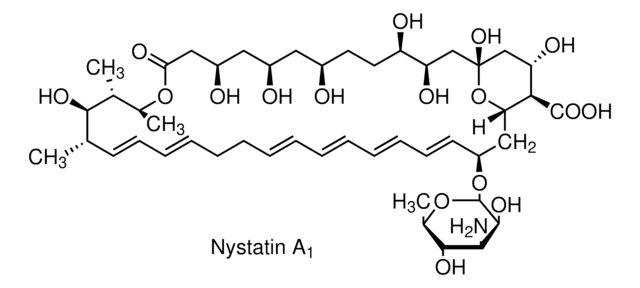E3789
Amphotericin B – Low Endotoxin
Less than 5 EU/mg, suitable for cell culture
Sinónimos:
Amphotericin B – Low Endotoxin
About This Item
Productos recomendados
biological source
Streptomyces sp. (Microbial)
form
powder
mol wt
924.08
technique(s)
cell culture | mammalian: suitable
storage temp.
2-8°C
General description
Amphotericin B induces K+ leakage, which is separate from its lethal action, as was demonstrated in human erythrocytes and is due to the inhibitory effect on the Na+/K+ pump.At sub-lethal concentrations, this drug stimulates either the activity of some membrane enzymes or cellular metabolism,in particular stimulation of some cells of the immune system.
Preparation Note
Storage and Stability
signalword
Danger
hcodes
Hazard Classifications
STOT RE 1
Storage Class
6.1C - Combustible acute toxic Cat.3 / toxic compounds or compounds which causing chronic effects
wgk_germany
WGK 3
flash_point_f
Not applicable
flash_point_c
Not applicable
Certificados de análisis (COA)
Busque Certificados de análisis (COA) introduciendo el número de lote del producto. Los números de lote se encuentran en la etiqueta del producto después de las palabras «Lot» o «Batch»
¿Ya tiene este producto?
Encuentre la documentación para los productos que ha comprado recientemente en la Biblioteca de documentos.
Los clientes también vieron
Nuestro equipo de científicos tiene experiencia en todas las áreas de investigación: Ciencias de la vida, Ciencia de los materiales, Síntesis química, Cromatografía, Analítica y muchas otras.
Póngase en contacto con el Servicio técnico





